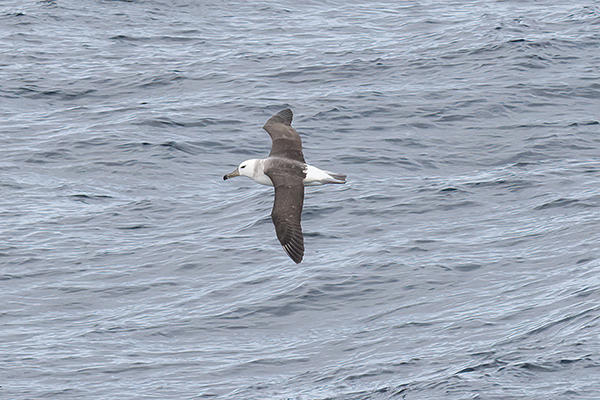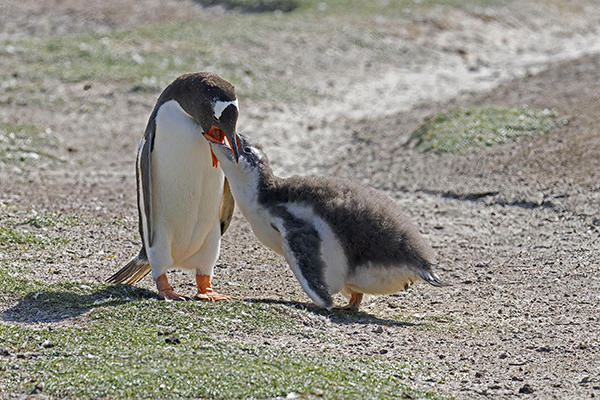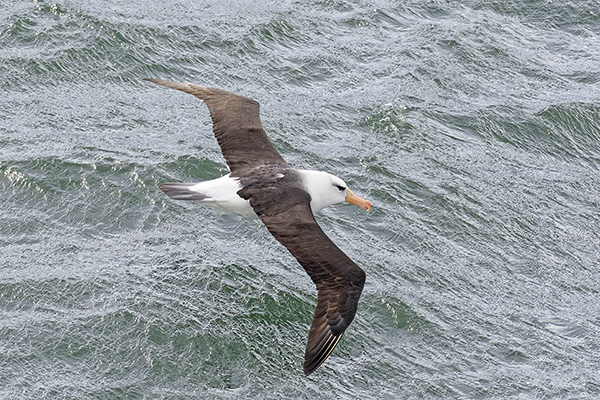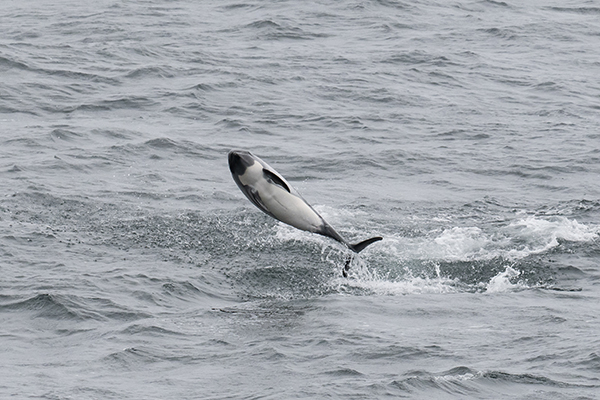Following on from our trip to Carcass Island we headed, after lunch on board, to Sanders Islands w where we'd be going ashore to view breeding Black-browed Albatross and our final penguin species - Southern Rockhopper. What a brilliant place - as well as the Southern Rockhopper and Albatross there were a few pairs of King Penguins (including some with very small young peering out from their 'pouches' above the parents feet), Gentoo's and Magellanics.
 |
| Spot the King Penguin chick |
King Penguins have a vertical pouch or brood patch above their feet. The egg is incubated in this pouch which is also used to keep the newly hatched young warm and safe until they are old enough to be left unattended. These pouches can be seen in the two birds photographed below.
Many of the Gentoo's were feeding well grown chicks in contrast to the very young King Penguin chicks we saw. It was comical watching young Gentoo's running after their parents trying to get the mto regurgitate more food when clearly the adults crops were empty!
The main attraction though were the nesting Southern Rockhopper Penguins. Our seventh and final penguin species of the trip. They didn't disappoint and after pending time at the colony we made our way down to the beach where a 'penguin highway' was being used by the Rockhoppers to the colony from the sea.
A quick visit to the museum and gift shop on the island and were were heading back to the Plancius earlier than expected as the bridge had reported the swell was increasing and was getting close to the operating limits of the zodiacs. However next day was promised to be even more exciting as Eduardo and the team gave us the usual evening briefing and a resume of the day before dinner. We were heading for New Island South and the picturesque Coffins Harbour
I was up on the bridge at the slightly later time of 6 am but went back to the lounge to get a hot brew only to find Nicole and Angelica had found a pod of seven Fin Whales whilst I was below! Fantastic views as they worked their way around the ship and out to sea.
Boarding the zodiacs we made our way ashore and threaded our way up the hill side to one of two viewpoints where we had fantastic views of both nesting Black-browed Albatross and Southern Rockhopper Penguins. It was simply stunning and it was hard to take it all in. There were literally birds everywhere.
 |
| juv Black-browed Albatross |




































































































No comments :
Post a Comment